Home>Storage Ideas>Kitchen Storage>Which Kitchen Floor Tiles Are Best? Designer Know-How You’ll Want
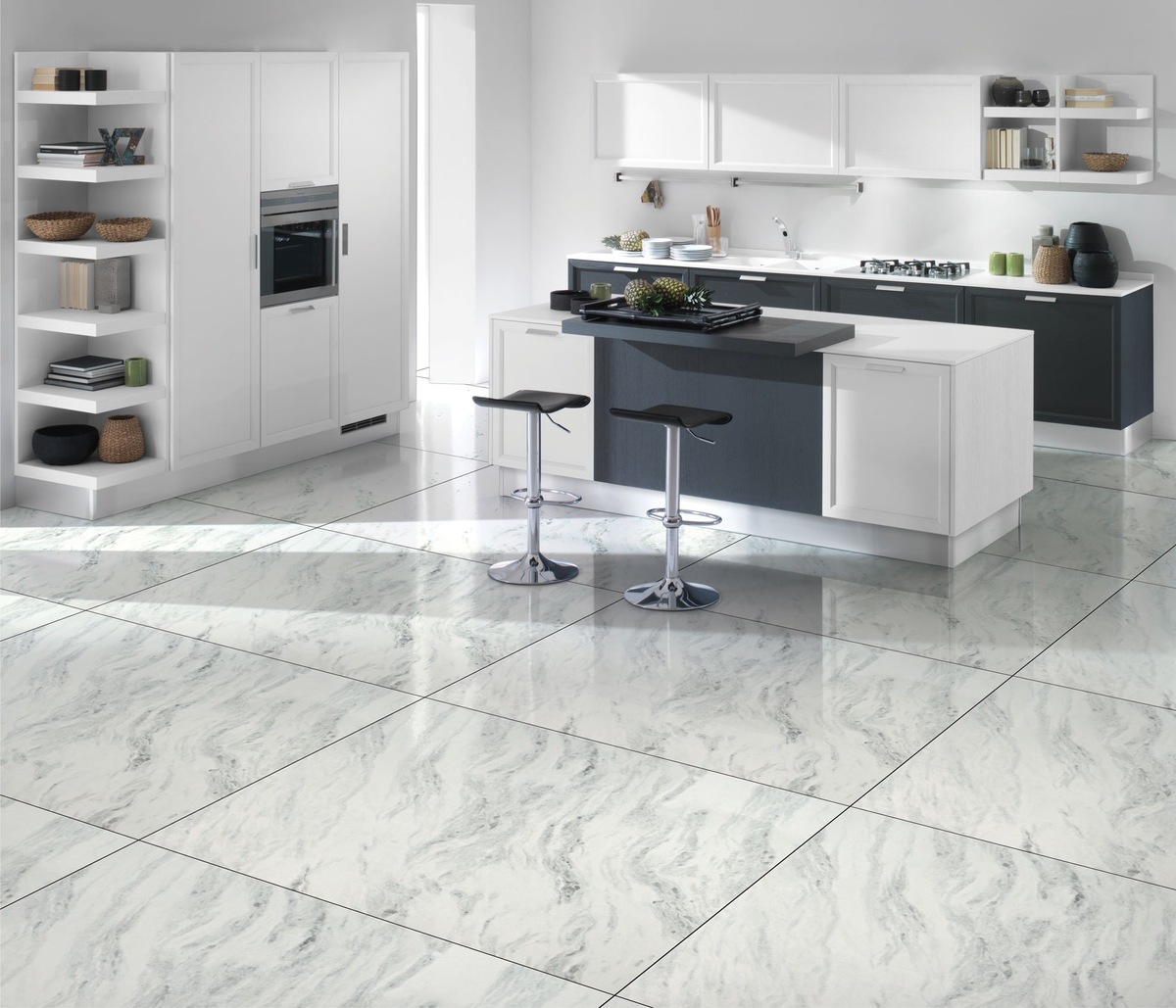

Kitchen Storage
Which Kitchen Floor Tiles Are Best? Designer Know-How You’ll Want
Modified: August 31, 2024
Get expert advice on the best kitchen floor tiles from top designers. Discover the kitchen storage ideas you've been searching for.
(Many of the links in this article redirect to a specific reviewed product. Your purchase of these products through affiliate links helps to generate commission for Storables.com, at no extra cost. Learn more)
Introduction
Welcome to the world of kitchen floor tiles! When it comes to kitchen design, one of the most important decisions you’ll make is choosing the right flooring. Not only does it need to be practical and durable, but it also has to complement your overall kitchen aesthetic. With an overwhelming array of options available, it can be challenging to determine which kitchen floor tiles are the best fit for your space.
In this article, we’ll provide you with some expert insights and designer know-how to help you make an informed decision. We’ll explore different types of kitchen floor tiles, discussing their advantages, drawbacks, and the overall impact they can have on your kitchen’s appearance. Whether you’re looking for a stylish and modern look or a warm and rustic feel, we’ve got you covered!
Before we dive into the specifics, let’s consider a few factors you should take into account when choosing kitchen floor tiles.
Key Takeaways:
- Choose kitchen floor tiles based on durability, safety, maintenance, style, and budget. Ceramic, porcelain, natural stone, vinyl, cork, and laminate tiles offer unique benefits to create a functional and stylish kitchen.
- Consider factors like durability, style, and maintenance when choosing kitchen floor tiles. Each type, from ceramic to cork, offers distinct qualities to transform your kitchen into a welcoming and practical space.
Factors to Consider when Choosing Kitchen Floor Tiles
1. Durability: The kitchen is a high-traffic area prone to spills, stains, and dropped objects. It’s crucial to choose tiles that can withstand the daily wear and tear without losing their aesthetic appeal.
2. Safety: As the kitchen floor can become slippery, especially when wet, it’s essential to choose tiles with a textured or slip-resistant surface to prevent accidents.
3. Maintenance: Consider the cleaning and maintenance requirements of different tile materials. Some tiles may require regular sealing or special cleaning products, while others are easier to clean and maintain.
4. Style and Aesthetic: The flooring should complement the overall style of your kitchen. Whether you prefer a sleek modern look, a cozy farmhouse style, or a classic and timeless design, there are tiles available to match your vision.
5. Budget: Determine your budget before embarking on your tile selection journey. Different types of tiles come with varying price tags, so it’s important to find a balance between your desired style and your budget constraints.
Now that we’ve covered the key factors to consider, let’s delve into the different types of kitchen floor tiles and explore their unique qualities and characteristics.
Key Takeaways:
- Choose kitchen floor tiles based on durability, safety, maintenance, style, and budget. Ceramic, porcelain, natural stone, vinyl, cork, and laminate tiles offer unique benefits to create a functional and stylish kitchen.
- Consider factors like durability, style, and maintenance when choosing kitchen floor tiles. Each type, from ceramic to cork, offers distinct qualities to transform your kitchen into a welcoming and practical space.
Factors to Consider when Choosing Kitchen Floor Tiles
When it comes to choosing kitchen floor tiles, there are several important factors to consider. Each of these factors plays a significant role in determining the right type of tiles for your kitchen. Let’s take a closer look at them:
1. Durability:
The kitchen is a high-traffic area where spills, stains, and dropped objects are common occurrences. That’s why it’s crucial to choose tiles that are durable and can withstand the daily wear and tear without losing their charm. Materials like ceramic, porcelain, and natural stone are known for their long-lasting durability.
2. Safety:
Safety should be a top priority in the kitchen, especially when it comes to the flooring. Since the kitchen floor can become slippery, especially when wet, it’s important to choose tiles with a textured or slip-resistant surface. This will help prevent accidents and ensure the safety of everyone in the kitchen. Look for tiles that are specifically designed to be slip-resistant.
3. Maintenance:
Consider the cleaning and maintenance requirements of the different tile materials. Some tiles require regular sealing or special cleaning products to keep them looking their best. On the other hand, there are tiles that are easy to clean and maintain, making them a convenient choice for busy kitchens. Vinyl and laminate tiles, for example, are known for their low maintenance requirements.
4. Style and Aesthetic:
Your kitchen floor is a significant design element that can greatly impact the overall style and aesthetic of the space. Whether you prefer a sleek modern look, a cozy farmhouse style, or a classic and timeless design, there are tiles available to match your vision. Ceramic, porcelain, and natural stone tiles offer a wide variety of colors, patterns, and textures to suit any style.
5. Budget:
Determining your budget beforehand is essential when choosing kitchen floor tiles. Different types of tiles come with varying price tags, so it’s important to find a balance between your desired style and your budget constraints. Ceramic and porcelain tiles are often more affordable options, while natural stone can be pricier. Vinyl and laminate tiles are generally more budget-friendly alternatives.
By considering these factors, you can make an informed decision and choose the best kitchen floor tiles that meet your needs and preferences. Remember to strike a balance between aesthetics, durability, safety, maintenance, and your budget to create a kitchen that is not only beautiful but also functional and practical.
Ceramic Tiles
Ceramic tiles are a popular choice for kitchen floors, thanks to their durability, versatility, and wide range of design options. These tiles are made from clay that is fired at high temperatures, resulting in a hard and durable material. Here are some key features and benefits of using ceramic tiles in your kitchen:
1. Durability:
Ceramic tiles are known for their exceptional durability, making them well-suited for high-traffic areas like the kitchen. They are resistant to scratches, stains, and moisture, making them an ideal choice for a busy kitchen where spills and messes are a common occurrence. With proper care, ceramic tiles can last for many years without losing their appeal.
2. Versatility:
Ceramic tiles offer an extensive range of design options, allowing you to create a customized look for your kitchen. They come in various sizes, shapes, colors, and patterns, giving you the freedom to experiment and create a design that matches your personal style. Whether you prefer a classic monochrome look or a vibrant mosaic pattern, ceramic tiles can fulfill your design aspirations.
3. Easy Maintenance:
One of the standout features of ceramic tiles is their ease of maintenance. They are resistant to stains and spills, and any dirt or debris can be easily wiped clean. Regular sweeping and occasional mopping with a mild cleaning solution are typically sufficient to keep ceramic tiles looking their best. Moreover, ceramic tiles do not require any special sealing or maintenance treatments.
4. Cost-effective:
Ceramic tiles are generally more affordable compared to other types of flooring options like natural stone or hardwood. They offer an excellent combination of durability and affordability, making them a budget-friendly choice for kitchen flooring. Additionally, their long lifespan ensures that you get good value for your investment.
5. Heat Resistance:
One of the advantages of ceramic tiles is their resistance to heat. They can withstand high temperatures, making them suitable for kitchens where cooking appliances generate heat, such as stoves and ovens. This heat resistance also makes ceramic tiles an excellent choice for radiant heating systems, as they can effectively conduct and retain heat.
While ceramic tiles offer numerous benefits, it’s important to note that they can be prone to chipping or cracking if heavy objects are dropped on them. Additionally, the grout lines between the tiles may require periodic cleaning to prevent staining or discoloration.
Overall, ceramic tiles are a versatile and reliable choice for kitchen floors. Their durability, easy maintenance, and extensive design options make them a popular choice among homeowners. Consider incorporating ceramic tiles into your kitchen design to create a beautiful and functional space that will stand the test of time.
Porcelain Tiles
When it comes to kitchen floor tiles, porcelain tiles are often considered the gold standard. Renowned for their exceptional durability and versatility, porcelain tiles are a popular choice among homeowners. Let’s explore the key features and benefits of using porcelain tiles in your kitchen:
1. Durability:
Porcelain tiles are extremely durable and are known for their strength and resistance to wear and tear. Made from dense and fine-grained clay, porcelain tiles are fired at very high temperatures, resulting in a material that is highly resistant to scratches, stains, and moisture. They can easily withstand the demands of a busy kitchen and maintain their beauty for years to come.
2. Versatility:
Porcelain tiles offer a wide range of design options, making them a versatile choice for kitchen floors. They can mimic the look of various natural materials, including stone and wood, without the associated maintenance and cost. Whether you prefer a sleek and modern aesthetic or a traditional and rustic feel, there is a porcelain tile design that can bring your vision to life.
3. Low Maintenance:
Porcelain tiles are incredibly easy to maintain, making them an attractive option for kitchen floors. They are resistant to stains, spills, and moisture, which means that any messes can be easily wiped clean. Generally, routine sweeping and occasional mopping with a mild cleaning solution are sufficient for keeping porcelain tiles looking their best. Unlike natural stone tiles, porcelain tiles do not require sealing.
4. Impervious to Water:
One of the standout features of porcelain tiles is their water resistance. These tiles have a low water absorption rate, making them suitable for kitchens where spills are common. Because of their water resistance, porcelain tiles are less likely to warp or crack due to moisture exposure. This makes them an excellent choice for kitchens, especially in areas prone to moisture, such as near the sink or dishwasher.
5. Heat Resistance:
Porcelain tiles are highly resistant to heat, which makes them an excellent option for kitchen floors. They can withstand high temperatures without warping or discoloration, making them suitable for kitchens with stoves, ovens, or radiant heating systems. This heat resistance adds to the overall durability and longevity of the tiles.
It’s important to consider that, due to their dense nature, porcelain tiles can be more challenging to install compared to other tile types. They may require professional installation, especially for larger format tiles, to ensure proper adhesion and alignment. Additionally, the hardness of porcelain tiles can make them less comfortable to stand on for prolonged periods, so using anti-fatigue mats or rugs in high-standing areas is recommended.
Overall, porcelain tiles offer unmatched durability, versatility, and easy maintenance, making them an excellent choice for kitchen floors. With their ability to withstand heavy foot traffic, moisture, and heat, porcelain tiles can create a beautiful and long-lasting kitchen flooring solution that is both practical and visually appealing.
When choosing kitchen floor tiles, opt for durable materials like porcelain or ceramic that are easy to clean and maintain. Consider textured or matte finishes to prevent slipping, and choose a color and pattern that complements your kitchen design.
Read more: How To Fix E2 Error In A Washing Machine
Natural Stone Tiles
When it comes to adding a touch of elegance and natural beauty to your kitchen, natural stone tiles are an ideal choice. These tiles are made from various types of stone, such as granite, marble, limestone, or travertine, and each offers its own unique characteristics and visual appeal. Let’s explore the key features and benefits of using natural stone tiles in your kitchen:
1. Timeless Beauty:
Natural stone tiles exude a timeless beauty that can instantly elevate the overall aesthetic of your kitchen. Each stone type boasts its own distinct texture, veining, and color variations. From the dramatic veining of marble to the rustic charm of travertine, natural stone tiles bring a captivating and luxurious feel to any space.
2. Durability:
Natural stone tiles are highly durable and can withstand heavy foot traffic, making them ideal for kitchen floors. While each stone type has different hardness levels, they generally offer exceptional strength and resilience. Granite, for example, is known for its incredible durability and resistance to scratches and heat, making it a popular choice for high-traffic areas like the kitchen.
3. Unique Patterns:
One of the distinguishing features of natural stone tiles is their unique patterns. No two natural stone tiles are alike, meaning you’ll have a floor that is truly one-of-a-kind. Whether you prefer the dramatic veining of marble or the mottled patterns of limestone, natural stone tiles can add a sense of character and individuality to your kitchen.
4. Heat Resistance:
Natural stone tiles have excellent heat resistance properties, making them ideal for kitchen floors. You can confidently place hot pots and pans directly on the surface without fear of damage or discoloration. However, it’s still advisable to use trivets or hot pads to protect the stone and prolong its lifespan.
5. Classic and Warm Aesthetic:
Natural stone tiles bring a classic and warm aesthetic to any kitchen. They effortlessly blend with various design styles, from traditional to contemporary, adding a touch of sophistication to the space. With their natural colors, textures, and earthy tones, natural stone tiles create a welcoming and inviting atmosphere in your kitchen.
It’s important to note that natural stone tiles require regular maintenance to keep them looking their best. Depending on the type of stone, sealing may be necessary to protect the surface from stains and spills. Additionally, some natural stone tiles can be more porous and susceptible to scratches, so it’s essential to use protective pads and avoid abrasive cleaners.
Overall, natural stone tiles provide a luxurious and enduring flooring option for your kitchen. The combination of their timeless beauty, durability, and unique patterns creates a stunning focal point that will enhance the aesthetics of your kitchen for years to come.
Vinyl Tiles
When it comes to affordable and low-maintenance kitchen flooring options, vinyl tiles stand out as a versatile and popular choice. Vinyl tiles are manufactured using a combination of synthetic materials, including PVC (polyvinyl chloride), making them highly durable and resistant to wear and tear. Here are some key features and benefits of using vinyl tiles in your kitchen:
1. Affordability:
One of the biggest advantages of vinyl tiles is their affordability. Compared to other flooring options like natural stone or hardwood, vinyl tiles offer a cost-effective solution for revamping your kitchen. They provide a budget-friendly means to achieve the desired appearance without compromising on quality or durability.
2. Durability and Resilience:
Vinyl tiles are known for their exceptional durability and resilience, making them suitable for high-traffic areas like the kitchen. They are resistant to scratches, stains, and moisture, ensuring that they continue to look their best even in a bustling kitchen environment. Vinyl tiles are designed to withstand daily wear and tear and can provide long-lasting performance.
3. Wide Range of Designs and Styles:
Vinyl tiles offer a vast range of design options, allowing you to find the perfect fit for your kitchen. They come in various colors, patterns, and textures, including designs that mimic hardwood, stone, or even ceramic tiles. Whether you prefer a sleek, modern aesthetic or a warm, rustic vibe, there is a vinyl tile design to suit your taste and complement your kitchen’s style.
4. Easy Maintenance:
One of the standout features of vinyl tiles is their low maintenance requirements. They are incredibly easy to clean and maintain, making them a practical choice for busy kitchens. Regular sweeping or vacuuming, along with occasional mopping using a mild cleaning solution, is usually sufficient to keep your vinyl tiles looking pristine. Unlike natural stone tiles, vinyl tiles do not require sealing or special maintenance treatments.
5. Comfort and Resilience:
Vinyl tiles offer a comfortable and resilient surface to stand on, making them ideal for kitchen floors where you may spend a significant amount of time standing. The cushioning effect of vinyl helps reduce fatigue and discomfort, providing a more enjoyable cooking experience. Additionally, vinyl tiles offer improved insulation and noise reduction properties, contributing to a quieter and more comfortable kitchen environment.
While vinyl tiles offer numerous benefits, it’s important to note that they can be vulnerable to sharp objects and can dent under heavy furniture or appliances. It’s advisable to use furniture pads or glides to protect the surface. Additionally, some vinyl tiles may require occasional resealing to maintain their water resistance properties.
In summary, vinyl tiles provide an affordable, durable, and low-maintenance option for kitchen floors. Their wide range of designs and styles, along with their comfort and resilience, make them a versatile choice. If you’re looking for a practical and budget-friendly flooring solution that doesn’t compromise on aesthetics, vinyl tiles are an excellent choice for your kitchen.
Cork Tiles
For a unique and eco-friendly kitchen flooring option, cork tiles are an excellent choice. Cork is derived from the bark of the cork oak tree, making it a sustainable and renewable material. These tiles offer a range of benefits and can add warmth and comfort to your kitchen. Let’s explore the key features and benefits of using cork tiles in your kitchen:
1. Sustainability:
Cork is a sustainable material as it is harvested from the bark of cork oak trees without causing harm to the tree. The bark naturally regenerates, allowing for a continuous and renewable supply. By choosing cork tiles for your kitchen floor, you’re making an environmentally-friendly choice that supports sustainable practices.
2. Insulation and Comfort:
Cork tiles provide excellent insulation, both in terms of temperature and sound. The cellular structure of cork traps air inside, creating a natural insulation barrier that helps maintain warmth in the kitchen. Cork also absorbs sound, reducing noise and creating a quieter atmosphere. Additionally, the soft and cushioned surface of cork tiles adds comfort underfoot, making it a pleasure to stand for long periods in the kitchen.
3. Durability:
Despite its soft and pliable feel, cork is surprisingly durable and resilient. It possesses natural elastic properties that allow it to bounce back from pressure or impressions caused by heavy objects. This makes it suitable for kitchen floors that experience heavy foot traffic and the occasional spills or dropped items. With proper care and maintenance, cork tiles can last for many years.
4. Water Resistance:
Cork is naturally resistant to water to some extent, thanks to its unique cellular structure. However, it is important to note that complete submersion or prolonged exposure to standing water can damage cork tiles. To enhance its water resistance, it is recommended to seal cork tiles with a suitable sealant to protect them from spills and moisture in the kitchen.
5. Style and Design:
Cork tiles offer a unique and natural aesthetic that can add warmth and character to your kitchen. The tiles come in a variety of sizes and designs, from classic square tiles to more modern and intricate patterns. Cork can also be stained or painted to match your preferred color scheme or complement your kitchen decor, making it a versatile option for creating a personalized look.
It is essential to note that cork tiles do require regular maintenance to preserve their appearance and longevity. They should be swept or vacuumed regularly to remove dirt and debris, and spills should be wiped up promptly to prevent staining. Additionally, cork tiles may need to be periodically resealed to ensure their water resistance and protect against damage.
In summary, cork tiles offer a sustainable and comfortable flooring solution for your kitchen. With their natural insulation, durability, and unique design options, cork tiles bring warmth and style into the heart of your home. Consider cork tiles for a cozy, eco-friendly, and visually appealing kitchen floor.
Laminate Tiles
When it comes to affordable and versatile kitchen flooring options, laminate tiles are a popular choice for many homeowners. Laminate flooring is composed of multiple layers, including a high-density fiberboard (HDF) core, a photographic layer that mimics the appearance of wood or stone, and a protective wear layer. Here are some key features and benefits of using laminate tiles in your kitchen:
1. Cost-effective:
Laminate tiles provide an affordable alternative to natural materials like hardwood or stone. They offer the look of expensive flooring options at a fraction of the cost, making them an attractive choice for those on a budget. With laminate tiles, you can achieve the desired aesthetic without breaking the bank.
2. Durability:
Laminate tiles are highly durable and resistant to scratches, stains, and fading. With their tough wear layer, they can withstand the demands of a busy kitchen, including heavy foot traffic, spills, and dropped objects. Laminate flooring is also less susceptible to moisture damage compared to hardwood or natural stone, making it a suitable choice for kitchens.
3. Realistic Appearance:
Laminate tiles are designed to mimic the look of natural materials like hardwood or stone. The photographic layer on the surface of the laminate replicates the textures, patterns, and colors found in these materials, creating a realistic and visually appealing floor. Whether you prefer the warmth of wood or the elegance of stone, laminate tiles can provide the desired aesthetic.
4. Easy Installation:
Laminate tiles are known for their easy and hassle-free installation. Most laminate tiles come with a click-lock system, allowing them to be easily snapped together over an underlayment or existing flooring. This makes them a suitable choice for DIY enthusiasts or those looking to save on installation costs.
5. Low Maintenance:
Maintaining laminate tiles is relatively simple. They can be easily swept or vacuumed to remove dust and debris, and occasional damp mopping with a mild cleaning solution is usually sufficient to keep them clean. Unlike hardwood or natural stone, laminate tiles do not require special treatments or refinishing, saving you time and effort in maintenance.
While laminate tiles offer numerous benefits, it’s important to note that they are not as durable or long-lasting as natural materials. They may be more prone to denting or water damage if exposed to excessive moisture. Additionally, laminate tiles cannot be refinished or sanded down like hardwood floors, so damaged tiles will likely need to be replaced.
In summary, laminate tiles provide an affordable, durable, and aesthetically pleasing option for kitchen floors. With their realistic appearance, easy installation, and low maintenance requirements, laminate tiles offer an excellent alternative to more expensive flooring options. Consider laminate tiles for a budget-friendly and stylish flooring solution in your kitchen.
Conclusion
Choosing the right kitchen floor tiles is a crucial decision that can greatly impact the overall look, feel, and functionality of your space. Whether you’re looking for durability, style, or affordability, the wide range of options available can cater to your specific needs and preferences.
Ceramic tiles offer durability, versatility, and a wide range of design options. They are a popular choice for their ability to withstand daily wear and tear, making them suitable for high-traffic kitchens. Porcelain tiles, on the other hand, provide exceptional durability, water resistance, and a luxurious aesthetic, making them an ideal choice for those seeking a sophisticated and resilient flooring option.
Natural stone tiles bring a timeless beauty and unique patterns that can elevate the overall aesthetic of your kitchen. With options like granite, marble, limestone, and travertine, you can bring a touch of elegance and natural charm to your space. However, it’s important to consider the maintenance requirements of natural stone tiles.
Vinyl tiles provide an affordable and low-maintenance option for kitchen floors. They offer durability, a wide range of design choices, and easy maintenance. Vinyl tiles are known for their resilience against scratches, stains, and moisture, making them practical and budget-friendly for busy kitchens.
Cork tiles offer a sustainable and comfortable flooring option. With their natural insulation, comfort, and unique patterns, cork tiles bring warmth and character to your kitchen. They are an eco-friendly choice that provides sound insulation and a resilient surface.
Laminate tiles provide an affordable alternative to natural materials. They are known for their durability, realistic appearance, easy installation, and low maintenance. Laminate tiles offer the look of hardwood or stone without the high price tag.
When choosing the right kitchen floor tiles for your space, consider factors such as durability, safety, maintenance, style, and budget. Each type of tile has its own unique qualities and benefits, so it’s important to strike a balance between your preferences and practical considerations.
In conclusion, by selecting the appropriate kitchen floor tiles, you can create a functional, stylish, and inviting space that perfectly suits your needs and personal style. Whether you prefer the classic elegance of natural stone, the versatility of ceramic or porcelain, the affordability of vinyl or laminate, or the sustainable charm of cork, there are kitchen floor tiles available to transform your kitchen into the heart of your home.
Frequently Asked Questions about Which Kitchen Floor Tiles Are Best? Designer Know-How You’ll Want
Was this page helpful?
At Storables.com, we guarantee accurate and reliable information. Our content, validated by Expert Board Contributors, is crafted following stringent Editorial Policies. We're committed to providing you with well-researched, expert-backed insights for all your informational needs.







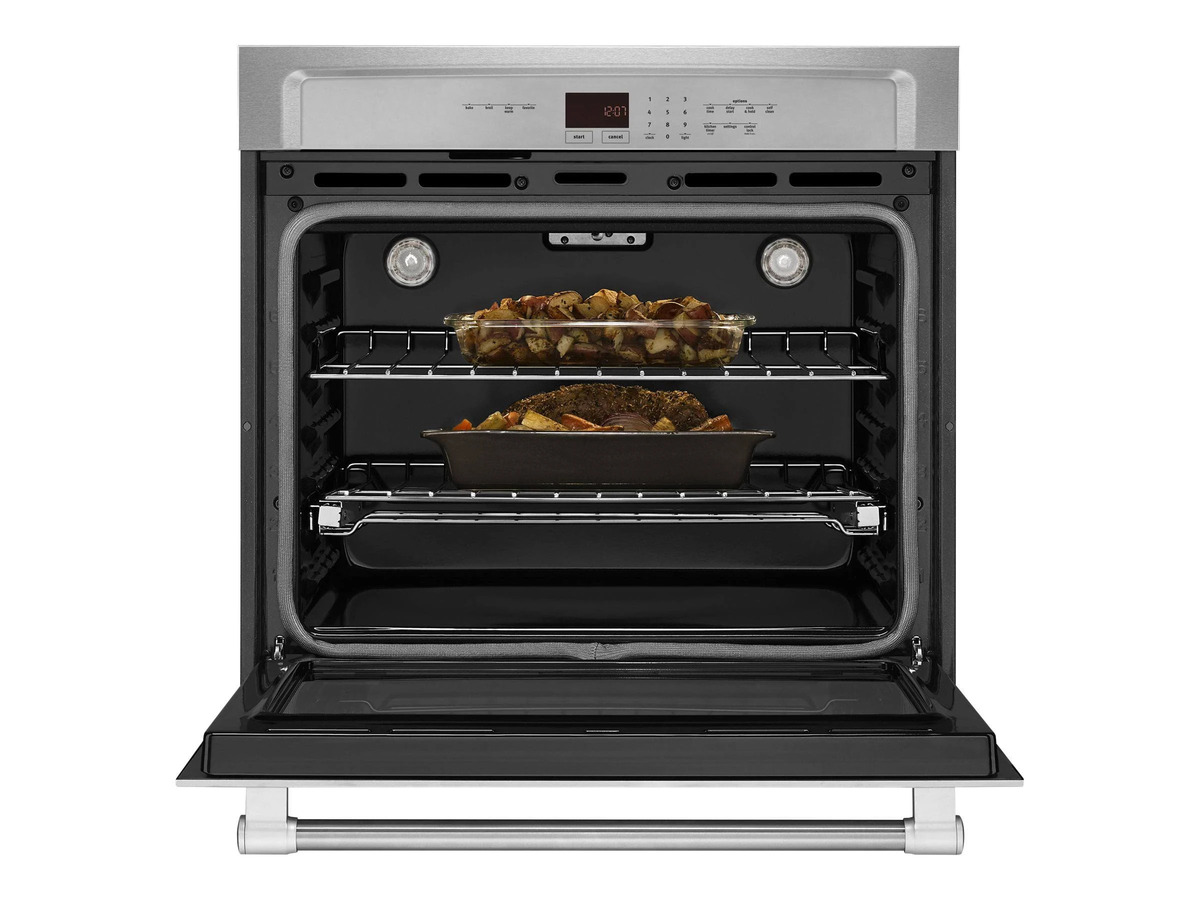
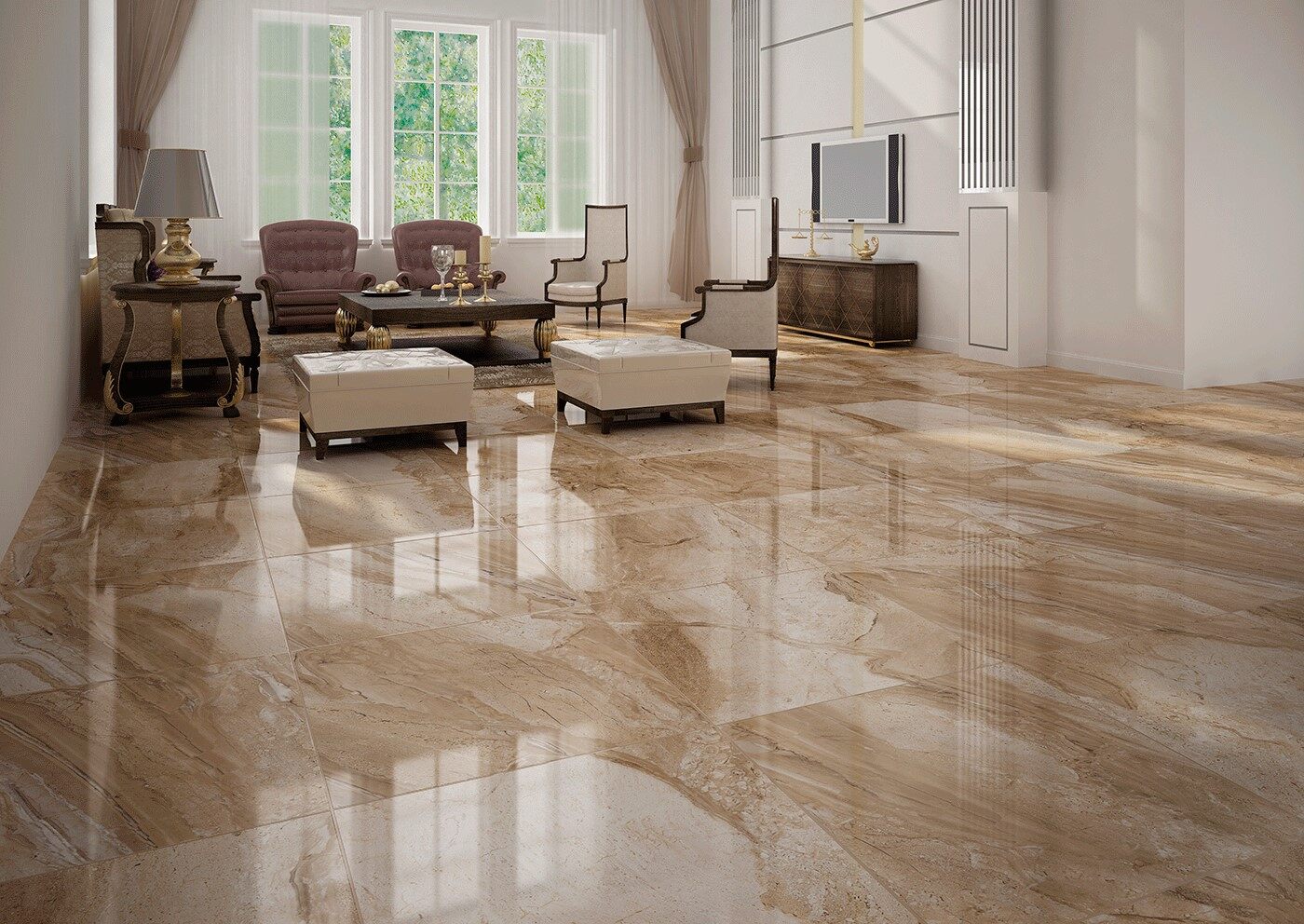
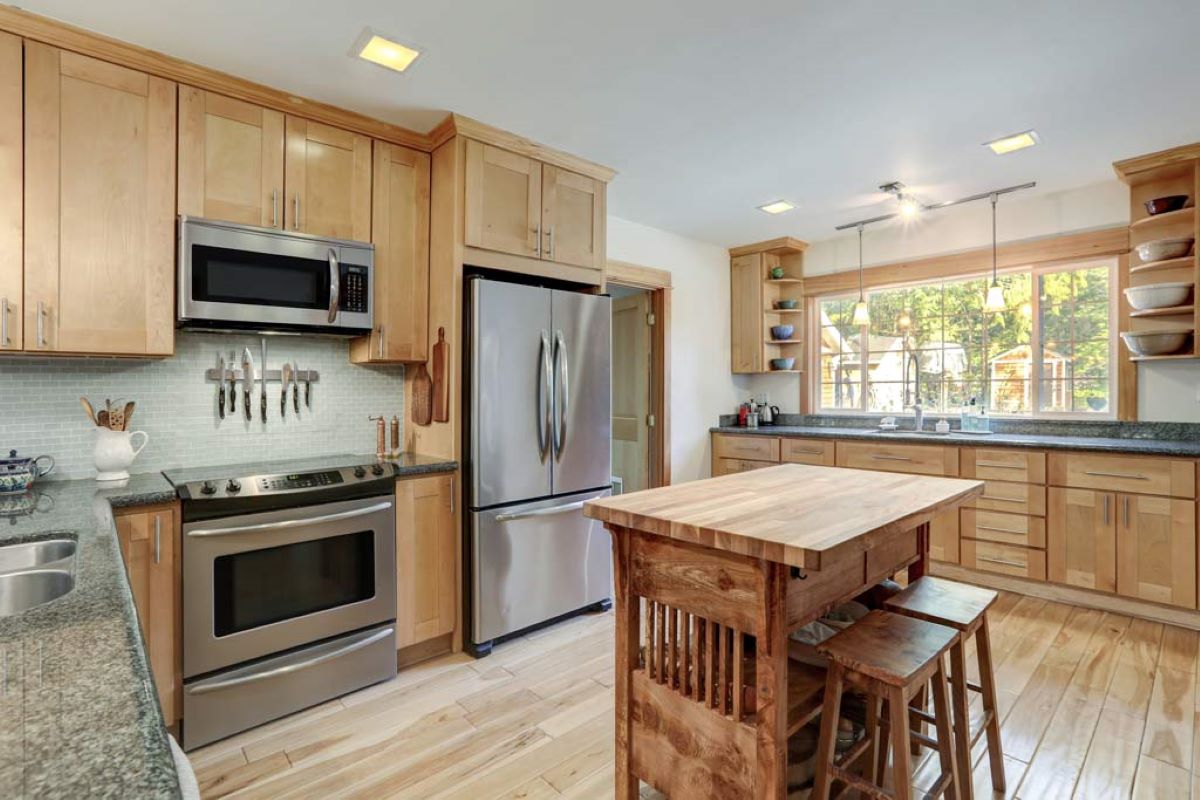
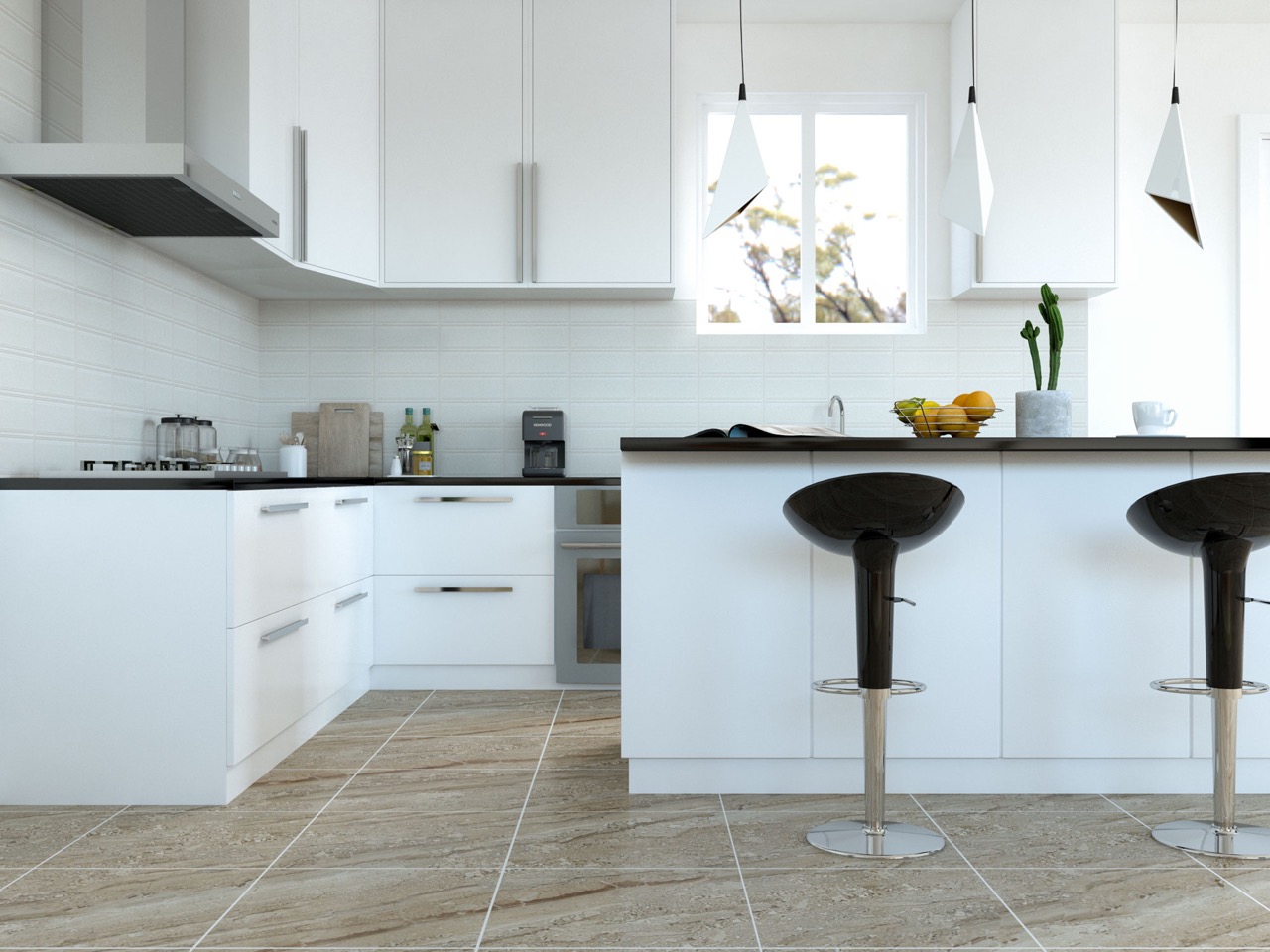
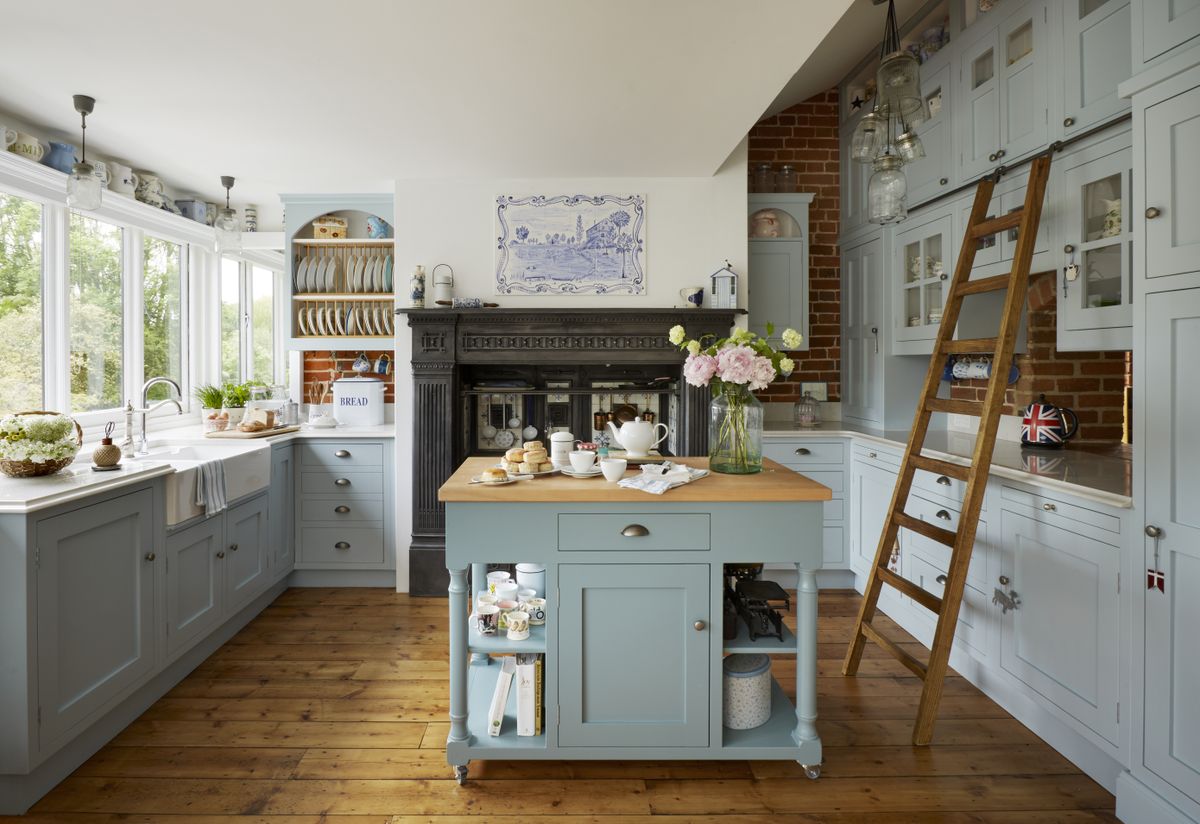
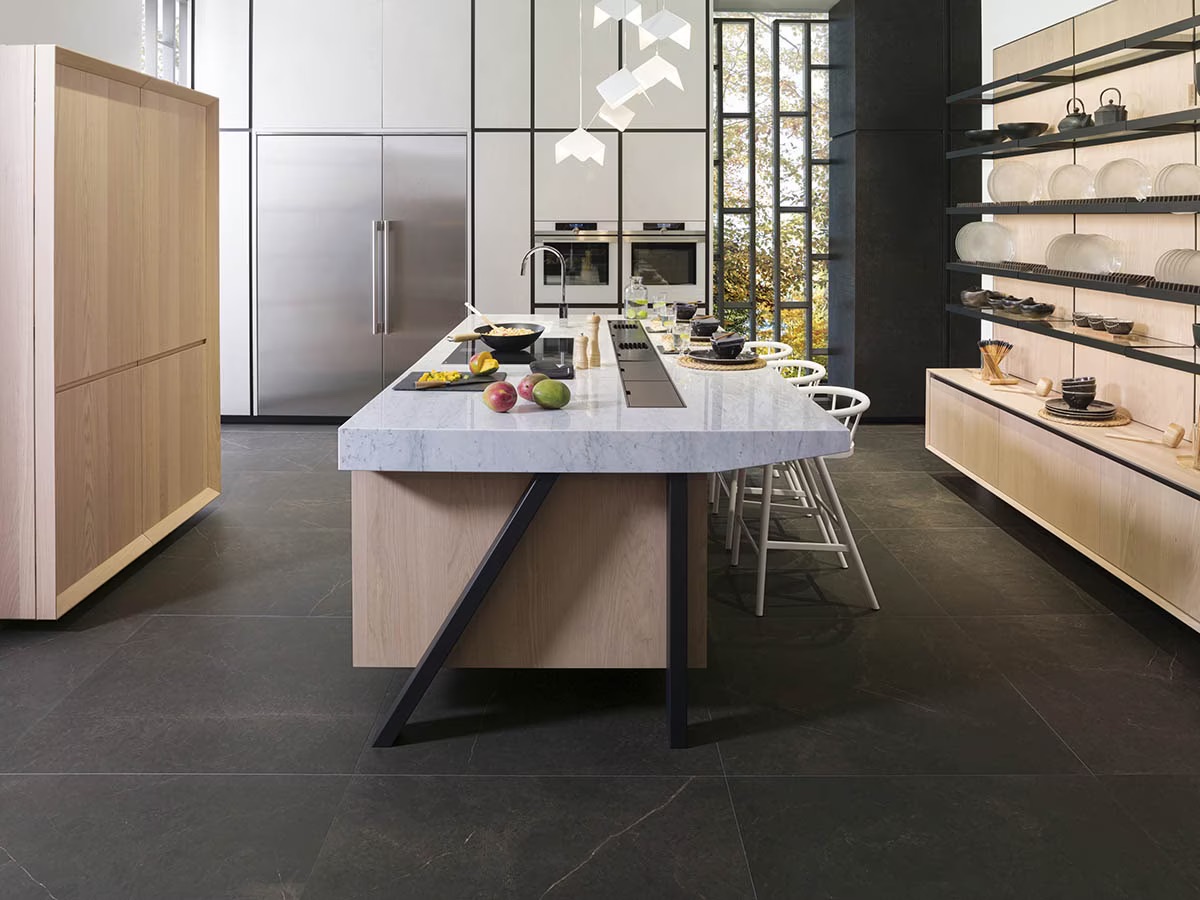

0 thoughts on “Which Kitchen Floor Tiles Are Best? Designer Know-How You’ll Want”